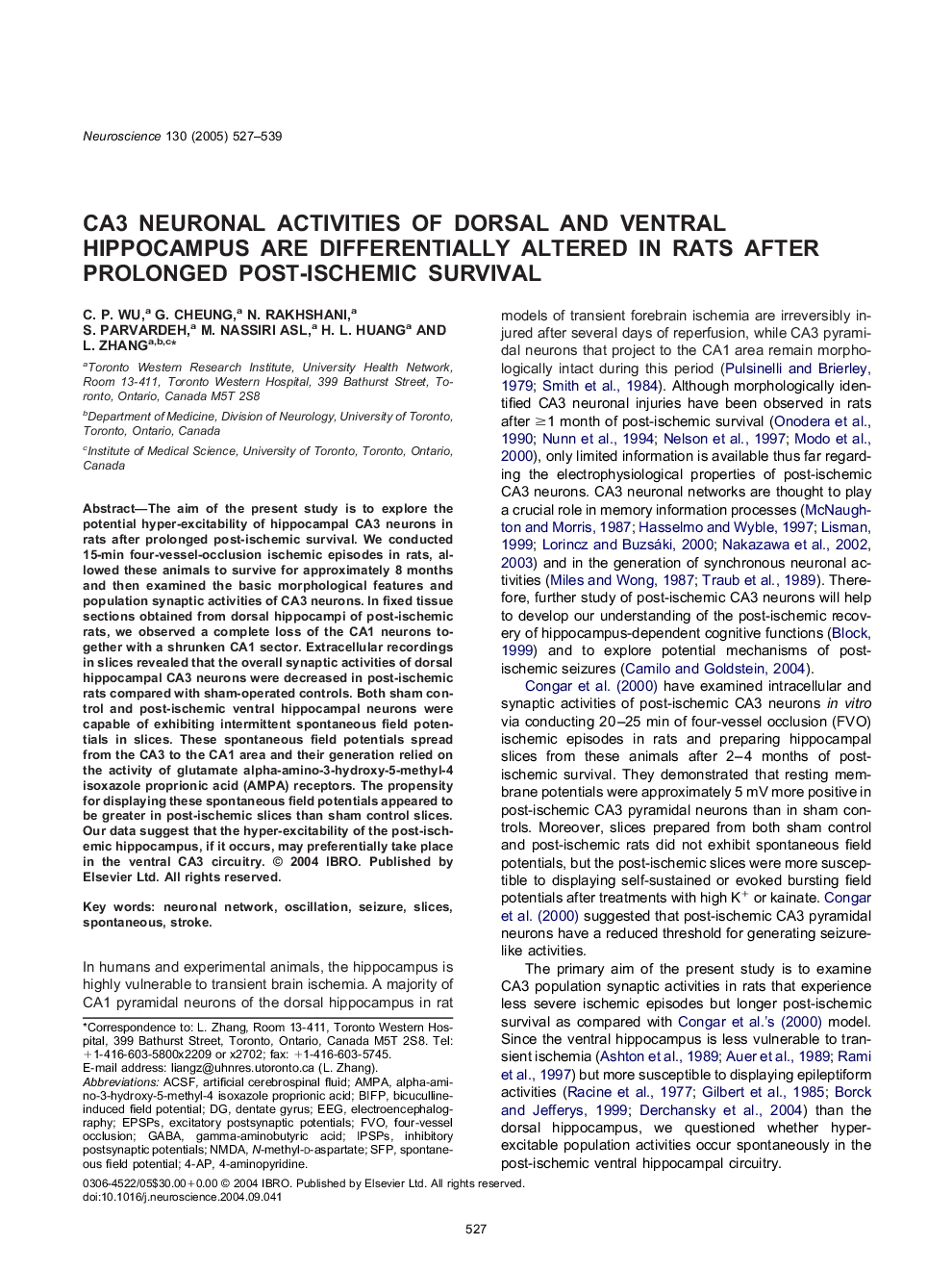| Article ID | Journal | Published Year | Pages | File Type |
|---|---|---|---|---|
| 9425817 | Neuroscience | 2005 | 13 Pages |
Abstract
The aim of the present study is to explore the potential hyper-excitability of hippocampal CA3 neurons in rats after prolonged post-ischemic survival. We conducted 15-min four-vessel-occlusion ischemic episodes in rats, allowed these animals to survive for approximately 8 months and then examined the basic morphological features and population synaptic activities of CA3 neurons. In fixed tissue sections obtained from dorsal hippocampi of post-ischemic rats, we observed a complete loss of the CA1 neurons together with a shrunken CA1 sector. Extracellular recordings in slices revealed that the overall synaptic activities of dorsal hippocampal CA3 neurons were decreased in post-ischemic rats compared with sham-operated controls. Both sham control and post-ischemic ventral hippocampal neurons were capable of exhibiting intermittent spontaneous field potentials in slices. These spontaneous field potentials spread from the CA3 to the CA1 area and their generation relied on the activity of glutamate alpha-amino-3-hydroxy-5-methyl-4 isoxazole proprionic acid (AMPA) receptors. The propensity for displaying these spontaneous field potentials appeared to be greater in post-ischemic slices than sham control slices. Our data suggest that the hyper-excitability of the post-ischemic hippocampus, if it occurs, may preferentially take place in the ventral CA3 circuitry.
Keywords
FVOIPSPsAMPAaCSFSFP4-APEPSPsNMDAN-methyl-d-aspartate4-aminopyridinegamma-aminobutyric acidElectroencephalographyfour-vessel occlusionSlicesseizurespontaneous StrokeNeuronal networkdentate gyrusartificial cerebrospinal fluidEEGoscillationexcitatory postsynaptic potentialsinhibitory postsynaptic potentialsGABA
Related Topics
Life Sciences
Neuroscience
Neuroscience (General)
Authors
C.P. Wu, G. Cheung, N. Rakhshani, S. Parvardeh, M. Nassiri Asl, H.L. Huang, L. Zhang,
